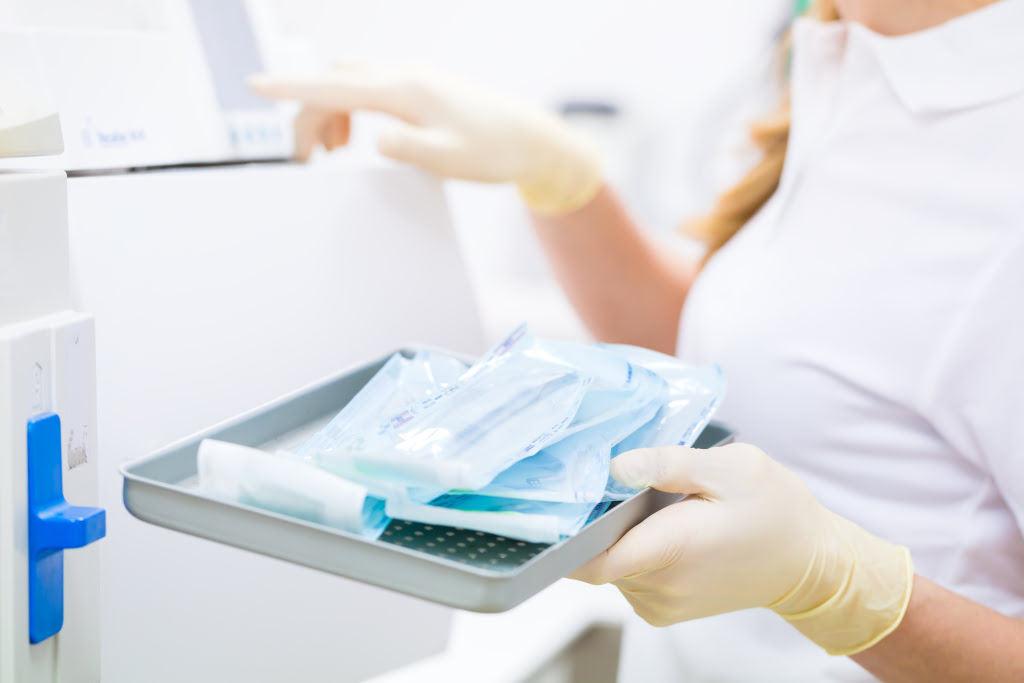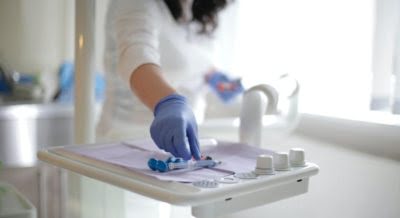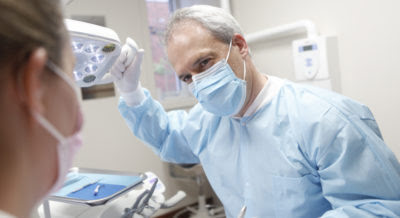Using reliable sterilization packaging is essential to knowing your dental instruments have been thoroughly sterilized every time and to maintaining the sterility of reprocessed items until use.
Saturated steam is the most dependable sterilization method
Once used, dental instruments, devices and equipment become contaminated and must be reprocessed, i.e., sterilized, before they can be safely reused.
According to the CDC, “Of all the methods available for sterilization, moist heat in the form of saturated steam under pressure is the most widely used and the most dependable.”
Steam sterilization is accomplished by placing items inside an autoclave and exposing them to direct steam at the required temperature and pressure for the specified time.
Four parameters of steam sterilization
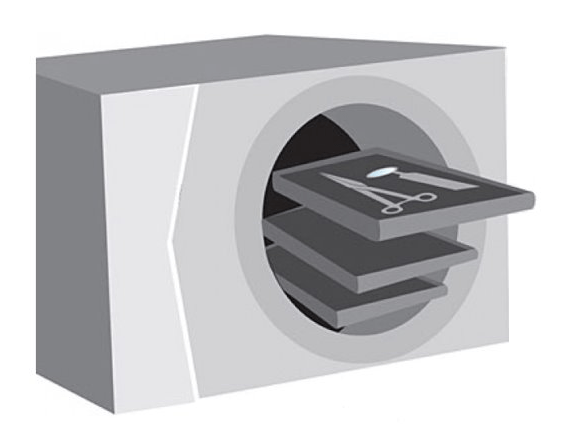
Steam: The ideal type of steam for sterilization is dry saturated steam and entrained water.
Pressure: Pressure inside the autoclave helps achieve the high temperatures necessary to quickly kill microorganisms.
Temperature: The two most common steam-sterilizing temperatures are 121°C (250°F) and 132°C (270°F). These high temperatures must be maintained for a minimum time period to kill microorganisms.
Time: At constant temperatures, sterilization time varies depending on the type of material of the item to be sterilized (e.g., metal vs. rubber, plastic, items with lumens, etc.), whether the item is wrapped or unwrapped, and the type of sterilizer used. CDC-recognized minimum exposure periods for sterilization of wrapped healthcare supplies are:
- In a gravity displacement sterilizer: 30 minutes at 121°C (250°F)
- In a pre-vacuum sterilizer: 4 minutes at 132°C (270°F)
The steam cycle is monitored by mechanical, chemical and biological monitors
Steam sterilizers are usually monitored using a printout (or graphically) by measuring temperature, the time at the temperature, and pressure. Typically, chemical indicators are affixed to the outside and incorporated into the sterilization packaging to monitor temperature or time and temperature.
The effectiveness of steam sterilization is monitored with a biological indicator containing spores of Geobacillus stearothermophilus. Positive spore test results are a relatively rare event and can be attributed to operator error, inadequate steam delivery or equipment malfunction.
Once sterilized, item sterility must be maintained until use
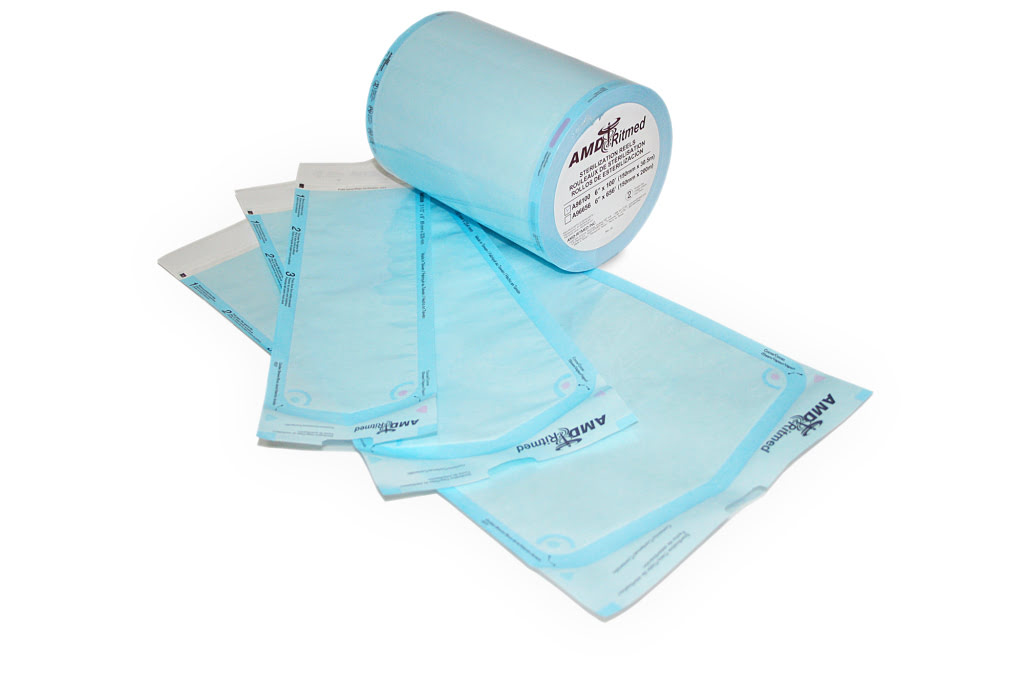
Dental offices have several packaging options for maintaining the sterility of reprocessed items:
- Rigid containers
- Peel-open pouches
- Roll stock or sterilization reels
- Sterilization wraps
Regardless of which option is used, the packaging material must allow penetration of the sterilant, provide protection against contact contamination during handling, provide an effective barrier to microbial penetration, and maintain the sterility of the processed item after sterilization.
Sterilization packaging selection criteria
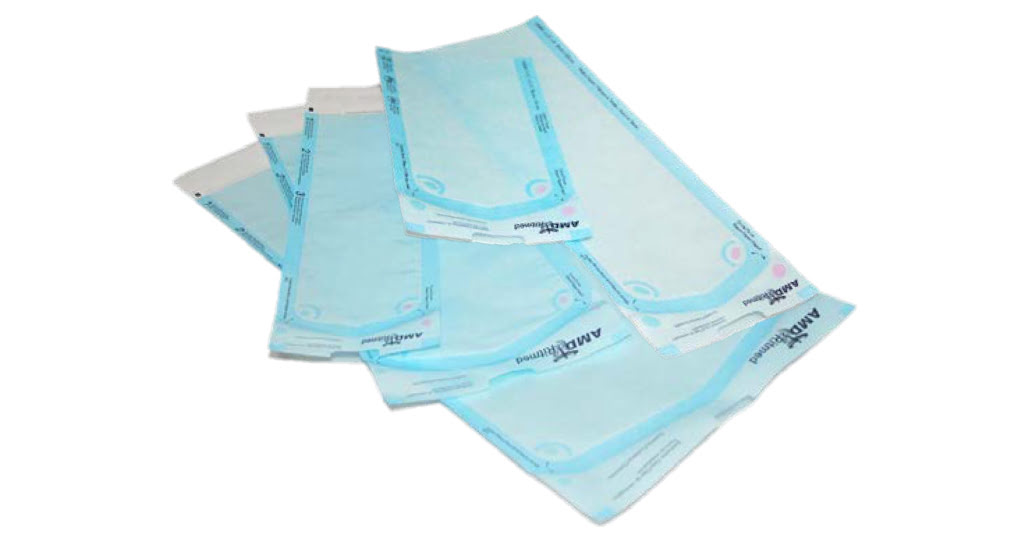
Ideally, sterilization packaging should be selected based on the following criteria:
- Barrier effectiveness: Prevents microbial penetration, maintains sterility of contents and prevents penetration of liquids
- Penetrability: Allows steam to penetrate
- Aeration: Allows aeration post-sterilization (i.e., allows ethylene oxide to dissipate)
- Ease of use by personnel
- Drapeability: Conforms to content contours smoothly and closely
- Flexible sizing: Offers sizes to accommodate items of various shapes and sizes
- Puncture resistance: Resists punctures by sharp instruments or other contents
- Tear strength: Resists tearing
- Transparency: Allows verification of contents before opening
- Linting: Minimal linting during use
Additional Sterilization Requirements
For dental offices, effective sterilization is essential to patient safety. But there is more to ensuring patient safety than effective sterilization processes and quality sterilization packaging:
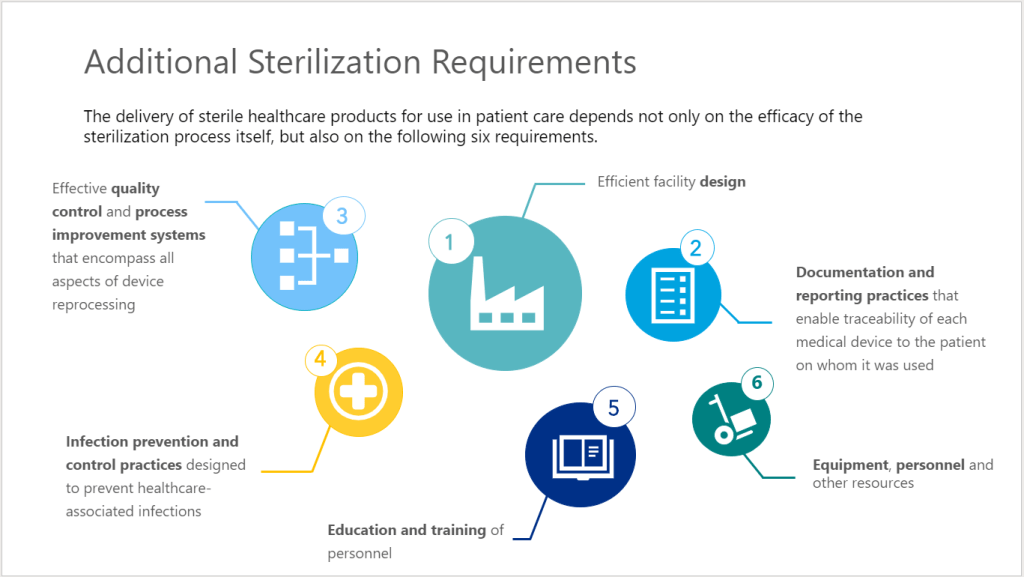
Medicom sterilization products
Medicom self-sealing sterilization pouches, CSR wraps and sterilization reels provide dental offices with the confidence that comes from knowing that dental instruments have been thoroughly sterilized.
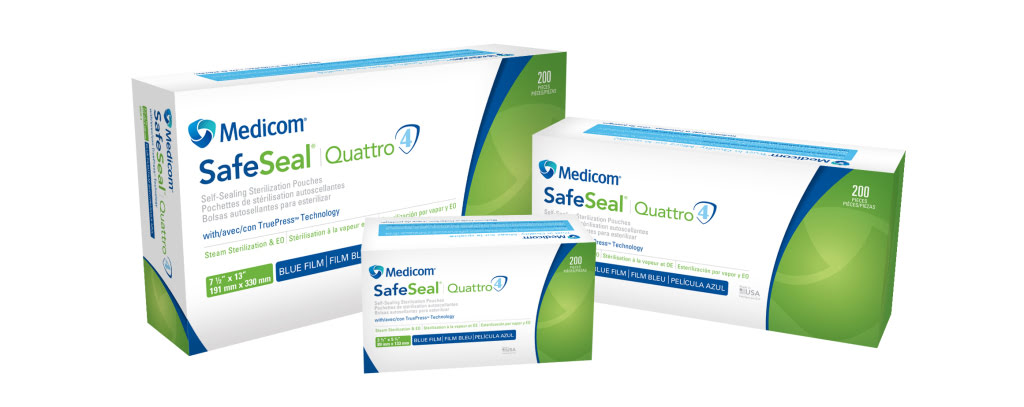
Medicom SafeSeal® Quattro self-sealing sterilization pouches are crafted in our own state-of-the-art manufacturing facilities. They are mechanically sealed using TruePress™ technology, which fuses the proprietary blue-tinted film to high-grade medical paper to form a perfect bond that ensures a leak-proof seal that protects the integrity of your instruments.
Medicom SafeSeal Quattro sterilization pouches confirm sterilization parameters − time, temperature and steam/EO − with internal and external multi-variable process indicators printed directly on the pouch.
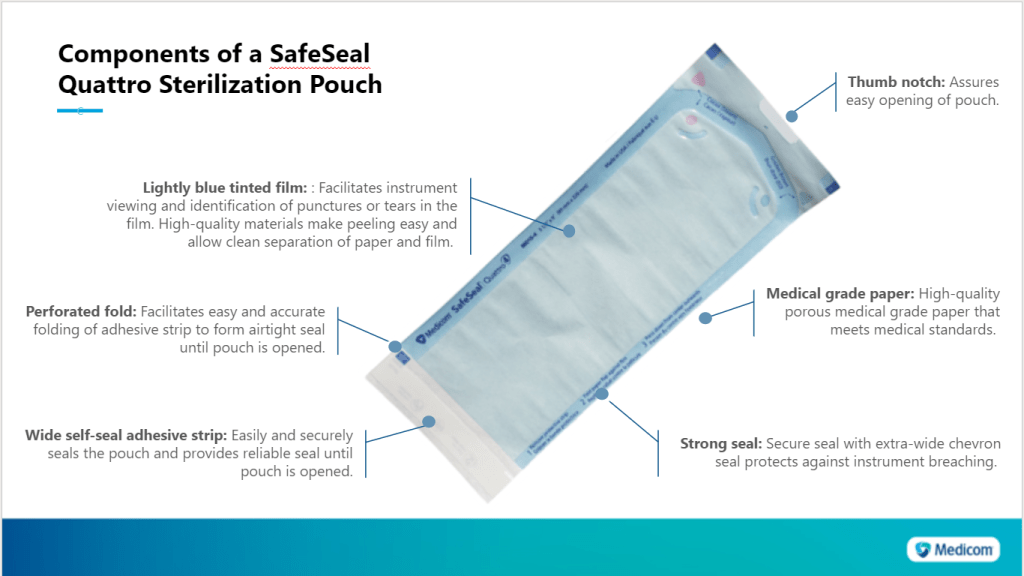
For more information about Medicom sterilization products, visit our website.
To learn more about the sterilization process, sign up for our FREE CE course, “Instrument Sterilization: Because Patient Safety Matters” today. See course description below.
Instrument Sterilization: Because Patient Safety MattersCredits: 1 CEU Course DescriptionThis course will take an in-depth look at how sterilization pouches are made, how to use them correctly and the regulations applicable to sterilization processing. ObjectivesAfter completing this course, the participant will be able to:
|
Important: Sterilization pouches, wrap and reels are intended for single use only and should always be inspected prior to use.
References
1. Centers for Disease Control and Prevention
2. Association for the Advancement of Medical Instrumentation. Steam sterilization and sterility assurance in health care facilities. ANSI/AAMI ST46. Arlington, VA, 2002:ANSI/AAMI ST46:2002.
3. Association for the Advancement of Medical Instrumentation. Comprehensive guide to steam sterilization and sterility assurance in health care facilities, ANSI/AAMI ST79. 2006.
4. Gurevich I, Jacobsen E, Cunha BA. Pseudoautoclave failure caused by differences in spore test steam sensitivities. Am. J. Infect. Control 1996;24:402-4
5. Bryce EA, Roberts FJ, Clements B, MacLean S. When the biological indicator is positive: investigating autoclave failures. Infect. Control Hosp. Epidemiol. 1997;18:654-6.
6. Dunkelberg H, Fleitmann-Glende F. Measurement of the microbial barrier effectiveness of sterilization containers in terms of the log reduction value for the prevention of nosocomial infections. Am. J. Infect. Control 2006;34:285-9.



 English (Canada)
English (Canada)